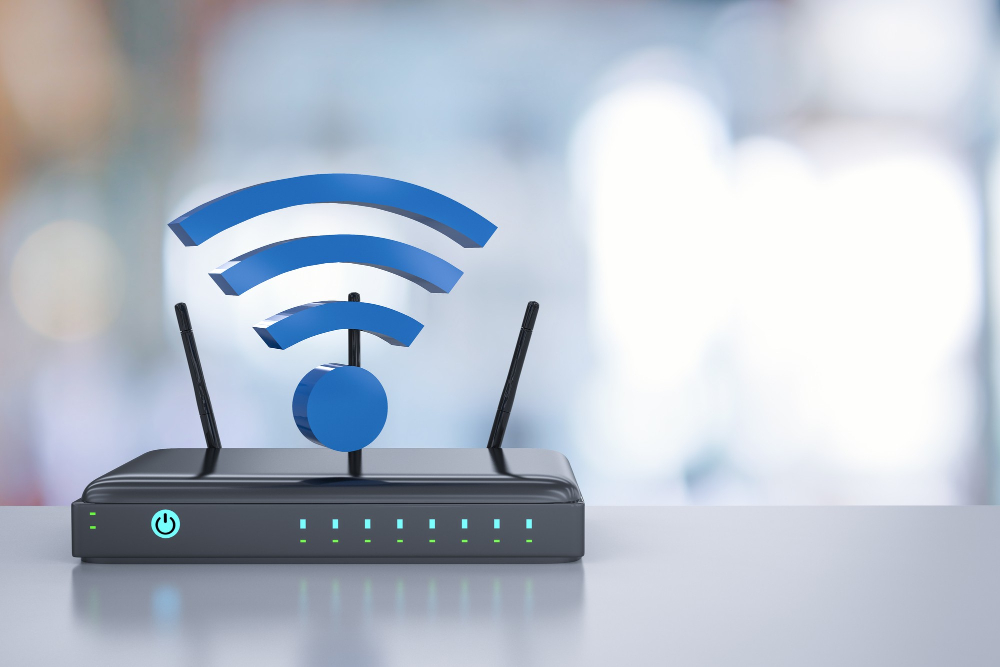A reliable and robust Wi-Fi connection is essential for uninterrupted streaming, gaming, working from home, and connecting smart devices. However, many homeowners face the issue of weak signals in certain areas of their homes, often referred to as Wi-Fi dead zones. Extending your Wi-Fi range can eliminate these issues, ensuring maximum coverage and a seamless internet experience.
In this article, we’ll explore practical solutions to extend your Wi-Fi range for optimal coverage throughout your home.
Why Do Wi-Fi Dead Zones Exist?
Wi-Fi dead zones occur due to several reasons:
- Obstacles: Walls, furniture, and appliances can block signals.
- Router Location: Placing the router in a corner or behind obstructions can limit range.
- Interference: Devices like microwaves, cordless phones, and baby monitors can disrupt Wi-Fi signals.
- Router Limitations: Older routers may not provide sufficient coverage for large homes.
Understanding these causes is the first step in resolving poor Wi-Fi coverage.
Step 1: Optimize Your Router Placement
The location of your router plays a crucial role in determining the range and strength of your Wi-Fi signal.
1. Central Location
Place the router in the center of your home to ensure even coverage in all directions.
2. Elevated Position
Mount the router on a wall or place it on a high shelf to minimize interference from furniture and other objects.
3. Avoid Obstacles
Keep the router away from thick walls, large metal objects, and electronic appliances that can block or interfere with the signal.
Step 2: Upgrade Your Router
If your current router is outdated, consider upgrading to a modern one with better coverage and speed capabilities.
1. Dual-Band or Tri-Band Routers
- Dual-Band: Offers 2.4 GHz (longer range, slower speed) and 5 GHz (shorter range, faster speed) bands.
- Tri-Band: Includes an additional 5 GHz band, ideal for handling multiple devices in large households.
2. Wi-Fi 6 Routers
Wi-Fi 6 routers provide better speed, coverage, and support for multiple devices, making them a great choice for homes with smart gadgets and heavy internet usage.
Step 3: Use Wi-Fi Extenders or Boosters
Wi-Fi extenders or boosters are cost-effective solutions to increase your network’s range.
1. How They Work
Wi-Fi extenders capture your router’s signal and rebroadcast it, effectively increasing the coverage area.
2. Placement Tips
- Place the extender halfway between your router and the dead zone.
- Ensure it’s within the router’s signal range for effective operation.
3. Benefits
- Easy to set up.
- Affordable and widely available.
Step 4: Install a Mesh Wi-Fi System
Mesh Wi-Fi systems are ideal for large homes or multi-story buildings.
1. How Mesh Systems Work
A mesh system consists of a main router and multiple satellite nodes that communicate with each other to provide seamless coverage throughout your home.
2. Advantages of Mesh Systems
- Eliminates Dead Zones: Covers every corner of your home.
- Seamless Connectivity: Devices switch between nodes without losing connection.
- Scalability: Easily add more nodes to extend coverage further.
3. Recommended Mesh Systems
Popular options include Google Nest Wi-Fi, Eero, and Netgear Orbi.
Step 5: Use Powerline Adapters
Powerline adapters are another effective solution for extending Wi-Fi range.
1. How They Work
These devices use your home’s electrical wiring to transmit the internet signal from your router to other parts of the house.
2. Installation
- Plug one adapter into a power outlet near your router and connect it via Ethernet.
- Plug the second adapter into a power outlet in the dead zone and connect a Wi-Fi access point or device.
3. Benefits
- Easy to install and configure.
- Works well in homes with thick walls that block Wi-Fi signals.
Step 6: Improve Antennas and Signal Strength
1. Upgrade Router Antennas
If your router has detachable antennas, replace them with high-gain antennas to increase range and signal strength.
2. Use Reflectors
DIY solutions like aluminum foil or commercial reflectors can focus your Wi-Fi signal in a specific direction, improving range and performance.
3. Adjust Antenna Position
Position antennas vertically for horizontal coverage and horizontally for vertical coverage.
Step 7: Optimize Network Settings
1. Change Wi-Fi Channels
Switching to a less congested channel can reduce interference and improve signal quality. Use tools like Wi-Fi Analyzer to find the best channel.
2. Enable Quality of Service (QoS)
QoS settings prioritize bandwidth for specific devices or activities, ensuring a smoother experience for critical tasks.
3. Set Up a Guest Network
A separate guest network reduces the load on your main network and improves performance for your devices.
Step 8: Regular Maintenance and Monitoring
1. Update Firmware
Keep your router’s firmware updated to benefit from performance improvements and security patches.
2. Monitor Device Usage
Too many connected devices can strain your network. Disconnect unused devices to free up bandwidth.
3. Perform Speed Tests
Regular speed tests help you identify issues and ensure your network is performing as expected.
Step 9: Consider Professional Help
If you’ve tried all the above solutions and still experience poor Wi-Fi coverage, it may be time to consult a professional. Network specialists can:
- Conduct a site survey to identify signal issues.
- Recommend advanced equipment or configurations tailored to your home.
- Ensure your network is secure and optimized for maximum performance.
Conclusion
Extending your Wi-Fi range doesn’t have to be a daunting task. By following these steps—optimizing router placement, upgrading equipment, using extenders or mesh systems, and adjusting network settings—you can eliminate dead zones and enjoy seamless coverage throughout your home. Whether you’re streaming movies, working remotely, or connecting smart home devices, a strong and reliable Wi-Fi network is the foundation of modern living.
Investing time and effort into improving your network will enhance your internet experience and prepare your home for future connectivity needs.







